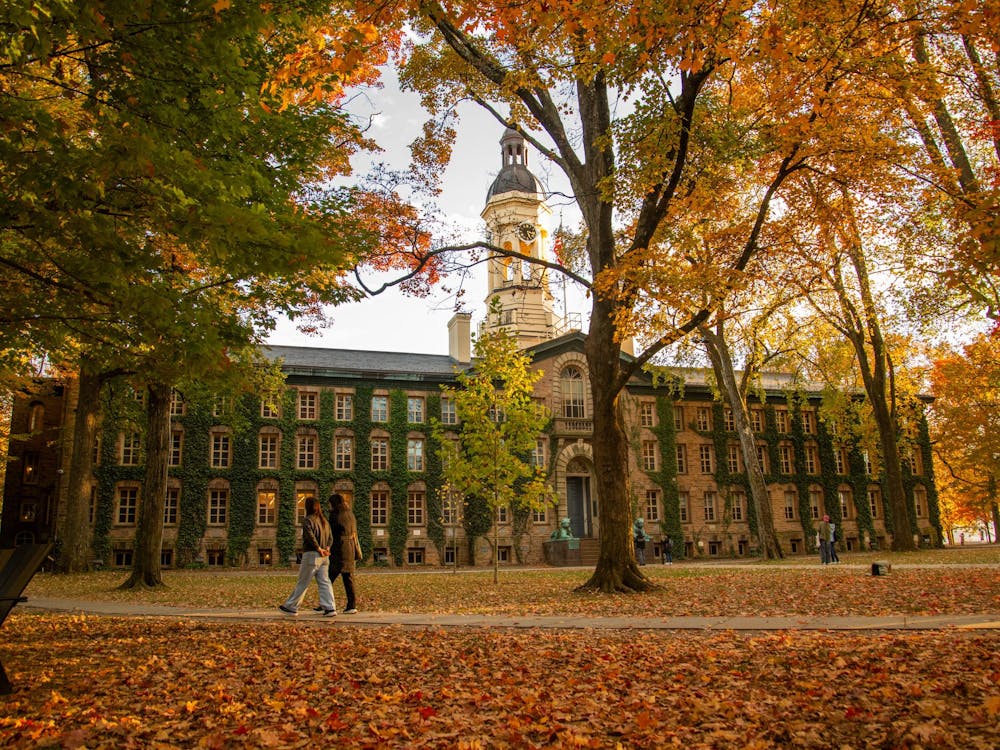On Sept. 27, the campus will celebrate and formally dedicate Whitman College. This day will be remembered as a critical moment in the history of the University, for Whitman represents far more than a new 250,000 sq. ft. collection of buildings to house 500 Princeton students. It also represents a remarkable architectural achievement for Whitman architect Demetri Porphyrios GS '74, who designed a college that has so seamlessly integrated into its surroundings that it gives the appearance of always having been there. The college will make it possible for an additional 125 undergraduates in each class to benefit from a Princeton education, and it is the flagship of the new four-year residential college system.
The reaction of most people who see Whitman for the first time is wonder — that it is possible to build such a collegiate Gothic stone structure in 2007; that it blends in so well with its surroundings, yet its individual dormitories and halls are clearly unified by a distinctive vision; and that the painstaking attention to detail at every turn leaves such a strong impression of integrity and permanence. There will be critics, to be sure, who will argue that a modern research university with a distinguished architecture school should be endorsing new forms of architectural expression, just as we encourage modern forms of scholarship and scientific research. My own view is that the language of collegiate Gothic has survived since the 12th century for a reason. Its beauty bespeaks quiet contemplation and seriousness of purpose, without being heavy-handed or overbearing. I predict that Whitman College will become one of the most admired and photographed places on campus.
Whitman College has also made it possible to expand the size of our undergraduate student body, something that had not happened since the transition to coeducation in the late 1960s. Three threads came together in the late 1990s to make this decision possible. First, the number of very well qualified students applying to study at Princeton greatly exceeded the number of places in the class. Second, the University had ample teaching capacity, as the faculty had been slowly but steadily growing over the years since coeducation began, to the extent that the student to faculty ratio had declined from 8:1 to 6:1. Finally, and perhaps most importantly, a University with a tradition of preparing effective national and world leaders that is also blessed with extraordinary financial resources has a moral obligation to educate as many students as it can, without compromising its character as a close-knit academic community or its educational program. Of course, Princeton could have simply added an extra 50 students to each of the five existing residential colleges. Instead, the expansion was seized upon as an opportunity to continue to improve the residential life of our University.
Whitman is the flagship for our new four-year residential college system. By providing a residential setting for all four classes of undergraduates, graduate students, and visiting faculty, the new system approximates Woodrow Wilson, Class of 1879's 100-year-old vision of an integrated intellectual community where the distinctions between academic and nonacademic student activities are blurred. What is most exciting to me are the ways in which campus-wide thinking and planning for the four-year colleges have elicited wonderful new ideas, like the adoption of the executive chef model for the college eateries. In the future, each college will have its own culinary identity, enlivening and diversifying the dining experiences for all campus residents. The new shared meal plan means that students no longer have to choose between joining an eating club or living in a college; now they can do both. Whitman and the four-year college system are parts of a long continuum of evolutionary campus improvements that go back to the days when students lived in Nassau Hall. I am confident that these newest changes will be heralded by future generations as a quantum leap forward.







